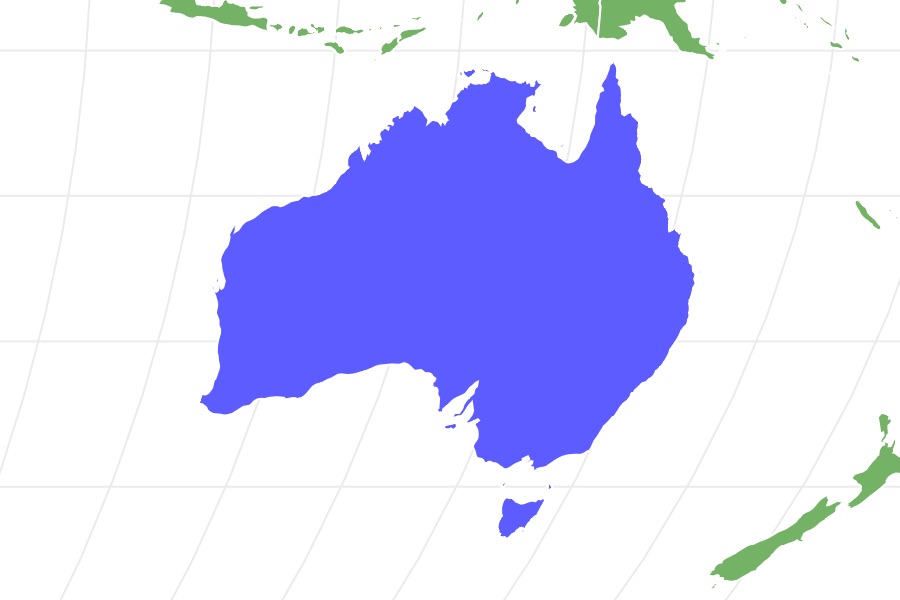Children’s python
Antaresia childreni
These snakes come in a wide variety of patterns and colors.
Advertisement
Children’s python Scientific Classification
- Kingdom
- Animalia
- Phylum
- Chordata
- Class
- Reptilia
- Order
- Squamata
- Family
- Pythonidae
- Genus
- Antaresia
- Scientific Name
- Antaresia childreni
Read our Complete Guide to Classification of Animals.
Children’s python Conservation Status
Children’s python Facts
- Prey
- Bats, rats, mice, other rodents, birds (finches), lizards, geckos
- Main Prey
- Bats and rodents
- Name Of Young
- Neonate or hatchling
- Group Behavior
- Solitary
- Fun Fact
- These snakes come in a wide variety of patterns and colors.
- Gestation Period
- 50 days
- Litter Size
- 5-25
- Lifestyle
- Nocturnal
- Favorite Food
- small bats
- Common Name
- Children's python, Stimson's python
View all of the Children’s python images!
Children’s python is a species of small nonvenomous snake in the Pythonidae family.
It is a nocturnal species that, along with the Stimson’s python variant, inhabits most of the northern two-thirds of Australia. This species is popular as a pet, available from many breeders worldwide.
Amazing Facts About the Children’s Python
- They have an extremely high tolerance for differing humidity levels – anywhere from 20%-80% is acceptable.
- These snakes have the widest distribution of any Australian python and occur over most of the continent.
- Snakes in the Antaresia genus are the smallest of all pythons.
Where to Find a Children’s or Stimson’s Python
Children’s python occurs in various habitats in northern Australia, while the Stimson’s python variant occurs in an even wider range, covering much of the interior of Australia all the way to the western coast. They are highly adaptable and live in coastal woodlands and plains, shrubland, inland wetlands, deserts, rocky areas, and heavily altered environments around people.
The snakes are semi-arboreal and often found climbing something, whether it’s a cave where they hunt bats, a tree where finches live, or a rock outcrop. They seem to be particularly fond of areas that offer many nooks and crannies in which to hide and hunt. Stimson’s python inhabits more arid environments than wet and strongly prefers rock outcrops, stony ranges, isolated large trees, and large termite mounds.
Both variants feed on birds, rodents, bats, frogs, skinks, and geckos. Some say that Children’s python also feeds on road kill. They’re primarily ambush predators but actively forage for prey as needed. Their mating season is during May and June, then females lay their eggs toward the end of the dry season in July and August. While the eggs develop, the female stays with her clutch to protect and keep a consistent temperature; then, about 50 days later, the babies hatch.
Children’s Python Scientific Name
Children’s python is a small python species, one of four in the Antaresia genus. The genus took its name from the red giant star Antares, which refers to Mars because of its color. A few species currently in the Antaresia genus used to be included in Morelia, but they’ve since been reclassified – giving us the four species presently listed.
This small python’s name may lead you to believe it’s perfect for children. However, contrary to what its name indicates, it’s not actually a child’s python; it’s actually named after a zoologist whose last name was Children. In 1842, John Edward Gray described the species and named it Liasis childreni, after his mentor, John George Children, who was a curator for the British museum’s Zoological Collection.
Stimson’s python, while described in 1985 as a separate species, is genetically similar to Children’s python. The differences between the two are so small, that in 2021, scientists determined that the snakes are the same species.
Types of Children’s Pythons
Originally, this python and the others in the Children’s complex were lumped together as Liasis childreni, but during the 1980s and 1990s, scientists looked closer and separated them into four species in either the Morelia or the Antaresia genus.
Then, in August 2021, scientists updated the taxonomy further using the results of some genetic analysis. This resulted in the combining of Children’s and Stimson’s into one species, and the addition of the Papuan python as a separate species. At this moment, we have four different python species in the genus Antaresia.
- Children’s or Stimson’s python (A. childreni)
- Spotted python (A. maculosa)
- Pygmy python (A. perthensis)
- Papuan python (A. papuensis)
Children’s Python Population and Conservation
Australia banned the export of many of their native animals in 1999 with the Environmental Protection and Biodiversity Conservation Act, but many were exported prior to this being in force. So all the Children’s or Stimson’s pythons you see outside of Australia should be either really old or captive-bred. Both the Children’s and Stimson’s pythons are listed as “least concern” by the IUCN Redlist of Threatened Species and have a stable, and possibly growing population.
Neither variant has any strong threats to their survival as a species.
Identifying the Children’s Python: Appearance and Description
While its pattern is reminiscent of a green anaconda, with its round, clean-edged spots, Children’s python has very little in common with that giant snake. Most Children’s pythons average about 3 feet long, and a few rare exceptions can exceed 5 feet. This snake has enlarged symmetrical scales on its head and small scales on its dorsal side. The species has a yellow to cream-colored belly with a brown base color. Its spots are often a darker shade of the same brown as its body. In the sunlight, it has an iridescent sheen. As a juvenile, the spots are more pronounced, but they become more muted as it matures.
Children’s python has elliptical pupils and a smallish head with heat-sensing labial pits. A dark stripe usually starts just ahead of the eye and passes through towards the neck.
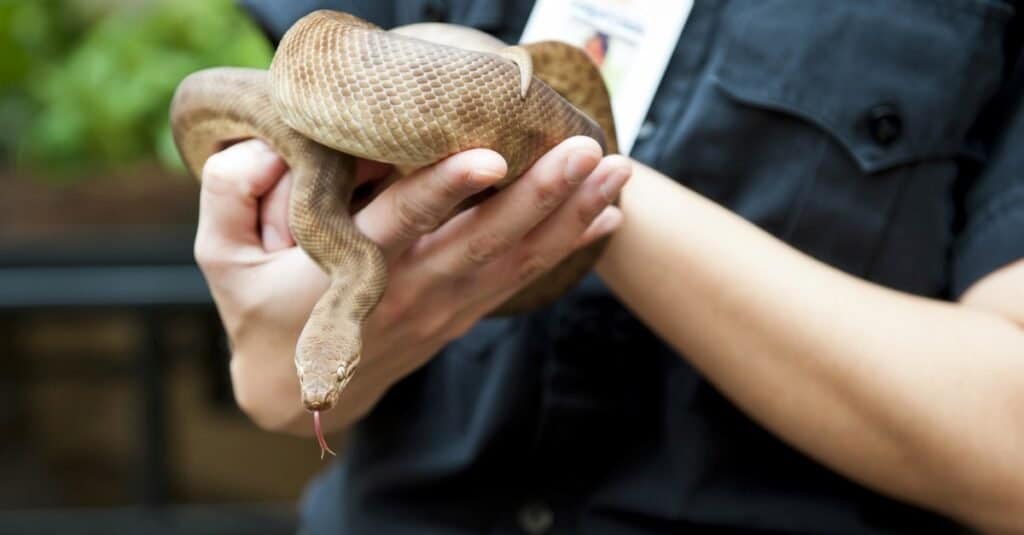
The Children’s Python gets its name from the scientist who first described them in 1842. John Edward Gray named them after his mentor, John George Children, the curator of the British Museum’s zoological collection at the time of the discovery.
©My Lit’l Eye/Shutterstock.com
Stimson’s Python
Until about 2020, Stimson’s python was classified as its own species. Then, scientists discovered that it’s a variant of Children’s python. In fact, they’re so closely related that scientists have difficulty telling them apart in the wild. They often find snakes that appear to be a hybrid of the two species, with characteristics of both.
The Stimson variant has a few small differences, which you could compare roughly to the differences between ball python morphs. It’s
These pythons are highly polymorphic; that is, they come in different colors and sometimes patterns. Their spots tend to be more dramatic and variable. Sometimes they merge into stripes or banded patterns; other times, they do not. Stimson’s variants usually have a higher contrast pattern throughout their lives, whereas the Children’s variant fades with age.
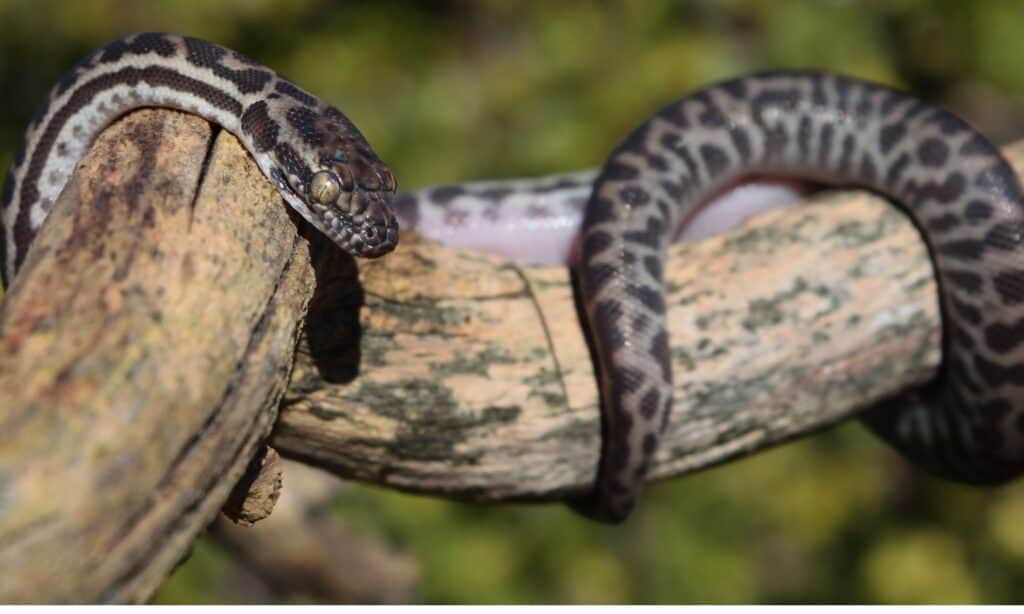
Stimson’s variant with a gray base color and side stripe.
©iStock.com/Rosalie McGlashan
Pictures and Videos of Children’s Pythons
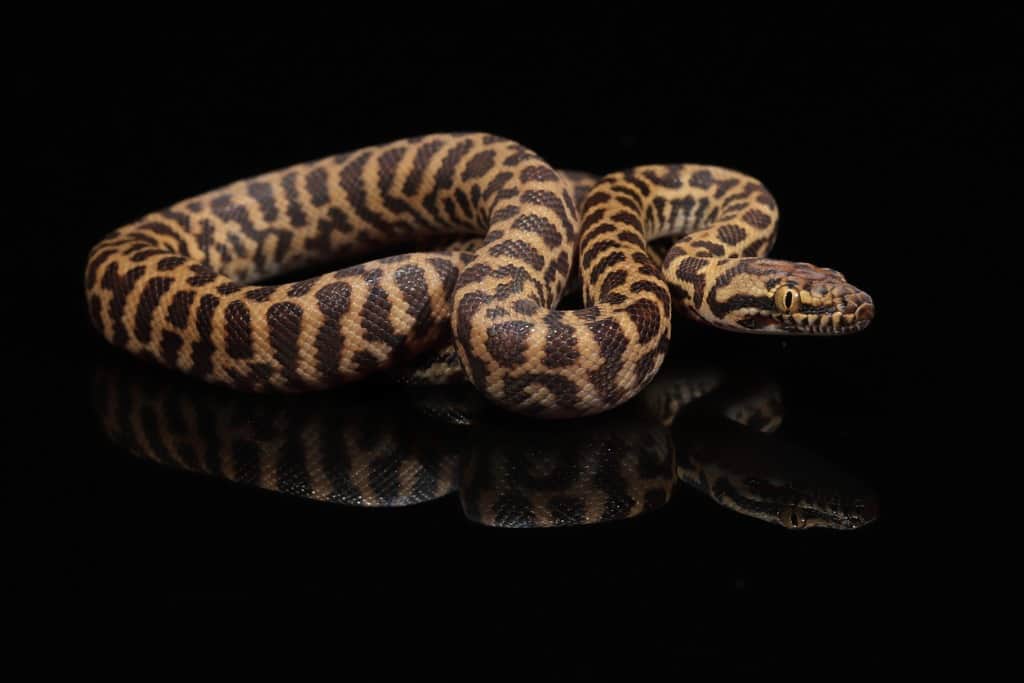
Stimson’s and Children’s pythons are the same species, as of 2021.
©iStock.com/Ken Griffiths
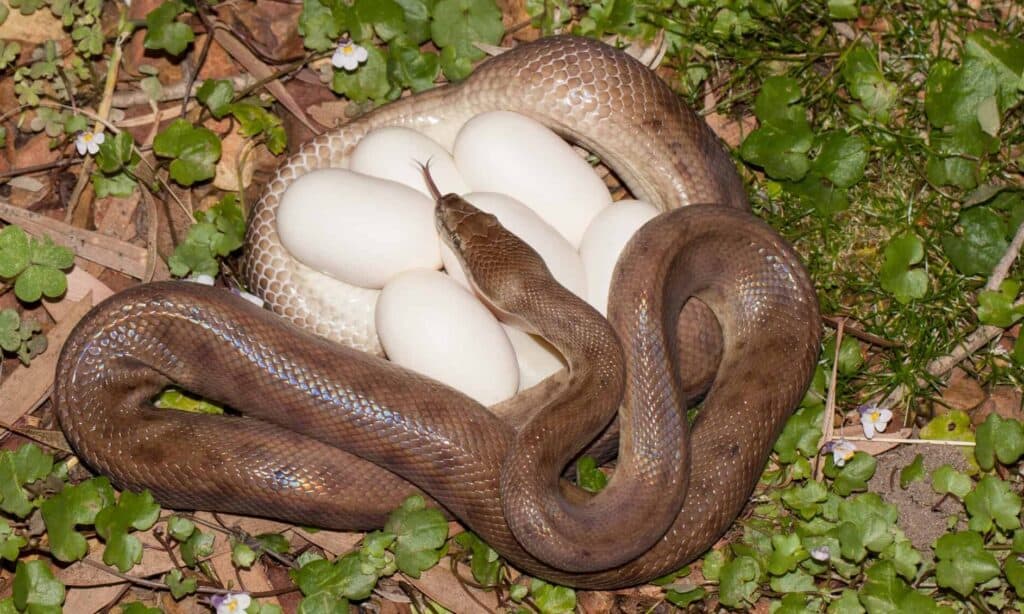
Pythons protect their eggs until hatching.
©iStock.com/Ken Griffiths
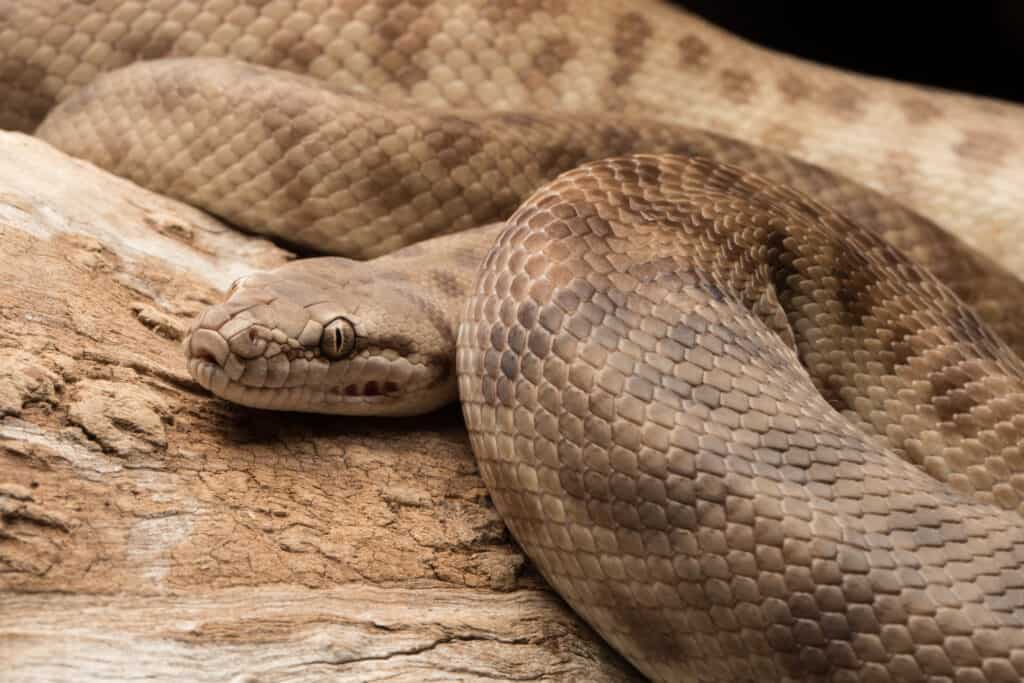
This
python eats
rodents, lizards, geckos, and bats.
©LIGHTITUP/Shutterstock.com
Are Children’s Pythons Dangerous?
Like all pythons, Children’s pythons aren’t venomous. They’re small enough that a bite from one may not even hurt. However, that’s not to say one should go out and try to get bit. It’s a little disconcerting to be snapped at by any snake, but generally, there’s nothing to worry about. These snakes can be a little snippier than others in the Antaresia genus, like the spotted python, but they’re still relatively easy-going for keepers, and fantastic to have roaming around your garden.
Children’s Python Behavior and Humans
This species is a popular pet worldwide, and some states in Australia allow keeping it as a pet if the owner has the right licenses. In the wild, they’re pretty likely to defensively bite if they don’t want to be picked up. However, Children’s pythons make great pets – just be sure you’re getting a captive-bred individual because they’re not legally exported anymore.
These snakes are great to have around, and if you live in Australia, it’s possible that you’ve seen one. Diminutive though they may be, they’re one of nature’s most effective forms of rodent control.
Similar Animals
Check out a few other pythons to learn more about these amazing creatures.
View all 235 animals that start with CChildren’s python FAQs (Frequently Asked Questions)
Are Children's pythons or Stimson's pythons venomous?
No! These little pythons aren’t venomous, and while a bite from one might hurt, it’s not dangerous.
How do Children's pythons or Stimson's pythons hunt?
Like most snakes, they are ambush predators. They tend to find a good hiding spot and wait for their prey. They can, however, actively forage when needed.
Are Children's pythons or Stimson's pythons aggressive?
No, but they’re small. When you’re a small animal, everything’s out to get you – it makes you fearful. As a small, fearful animal – you bite.
Where do Children's pythons or Stimson's pythons live?
These snakes are endemic to Australia – home to many python species.
What do Children's pythons or Stimson's pythons eat?
Rodents, bats, lizards, geckos, birds. They’re flexible.
Thank you for reading! Have some feedback for us? Contact the AZ Animals editorial team.
Sources
- Damien Esquerré, Stephen C. Donnellan, Carlos J. Pavón-Vázquez, Jéssica Fenker, J. Scott Keogh, Phylogeography, historical demography and systematics of the world’s smallest pythons (Pythonidae, Antaresia), Molecular Phylogenetics and Evolution, Volume 161, 2021, 107181, ISSN 1055-7903, https://doi.org/10.1016/j.ympev.2021.107181., Available here: https://www.sciencedirect.com/science/article/abs/pii/S1055790321001147?via%3Dihub
- Children's Python | IUCN Redlist of Threatened Species, Available here: https://www.iucnredlist.org/species/13300639/13300647#assessment-information
- Stimson's Python | IUCN Redlist of Threatened Species, Available here: https://www.iucnredlist.org/species/13300683/13300693
- Children's/Stimson's Python | Reptile database, Available here: https://reptile-database.reptarium.cz/species?genus=Antaresia&species=childreni
- Stimson's Python | Australian Museum, Available here: https://australian.museum/learn/animals/reptiles/stimsons-python/

